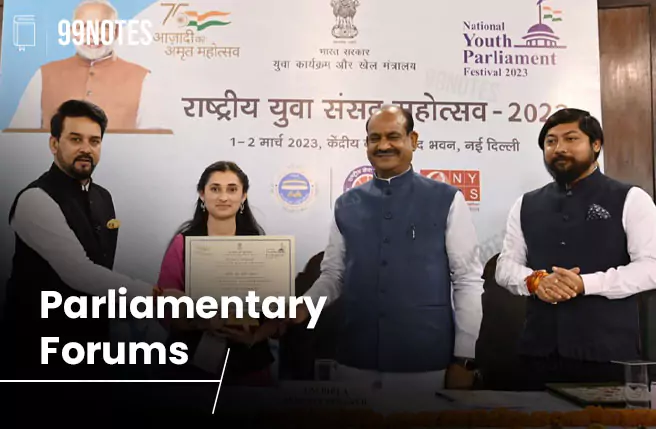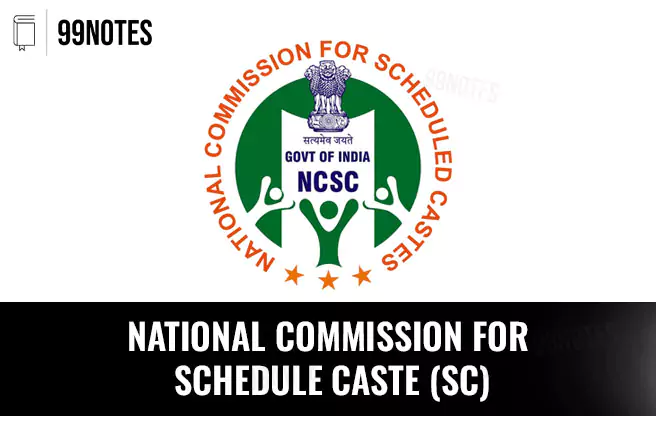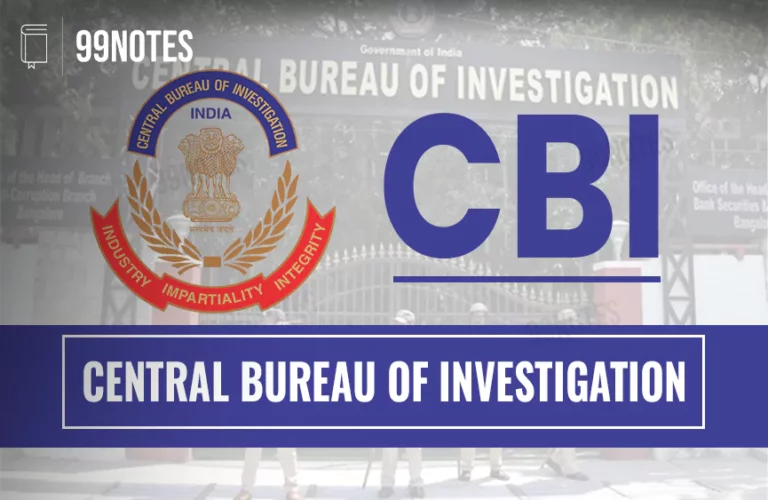Parliamentary System
In modern democracies, two kinds of relationships exist between the Legislature and the Executive; it can be defined by either the Parliamentary or the Presidential government system.
- The Parliamentary system involves a fusion of the Executive and Legislature, and the Executive is responsible to the Legislature for its acts and policies. It is also known as the Westminster Model (Location of the British Parliament), as it originated in Britain and is prevalent in countries like Britain, Canada, India, Japan.
- The Presidential system is based on a rigid separation of power, where the office of the President is independent of the Legislature in respect of the term of office. This can be seen in countries like the USA, Russia, Brazil, Mexico, Sri Lanka.
The Constitution of India provides for both the centre and the states to have parliamentary governance systems. The parliamentary system at the centre is covered in Articles 74 and 75, and the state systems are covered in Articles 163 and 164.
|
Separation of Power |
1. An organ of Government should not exercise the function of another organ. 2. An organ of the Government should not encroach upon the functions of the other two organs of Government. 3. The same person should not head more than one organ of the Government.
|
Features of the Parliamentary System of Government
The Parliamentary system has distinctive features which distinguish it from the presidential system. The feature of the Parliamentary system in India is discussed below:
- Two Executive Heads
-
- In the Parliamentary system, two executive heads exist; one is the head of state, and the other is the head of Government.
- The head of state, i.e. the President, is only the nominal and symbolic representative of the state. His functions are non-political and ceremonial in nature.
- The head of Government, i.e. the Prime Minister, is the real Executive and political head of the Government. He leads the cabinet and, therefore, the Government.
- Article 74 establishes a council of ministers led by the Prime Minister to aid and advise the President in exercising his functions; the advice is binding on the President (Refer to 42nd & 44th CAA). Thus, even though all power rests with the President, she is not free to act without the aid of the Council of Ministers.
- No rigid separation of power
-
- In the Parliamentary system, there is no clear-cut separation of power; in fact, there is a fusion between these organs of Government.
- The fusion exists primarily in four forms:
-
-
- The Executive, including the Prime Minister, is drawn from the Legislature and remains responsible to it. The members of executives, i.e. ministers, are accountable to the Legislature in matters of their respective departments.
- The Executive cannot pass its proposals without the support of the majority of the Legislature.
- The Legislature (only the Loksabha) can remove the Executive by passing the no-confidence motion.
- The Prime Minister can dissolve the Legislature before the completion of the term and can call for fresh elections.
-
- Collective Responsibility
-
- As per this principle, the Council of Ministers should collectively support all government decisions publicly and in the Legislature.
- Decisions made in the cabinet are considered as collective decisions and must be supported by all its members.
- A member of the council who cannot support government decisions in public and in the Legislature is expected to resign from the council of ministers.
- This feature becomes critical in the case of a coalition government.
- This principle ensures unity and promotes balance and moderation in the council. The critics argue that it is meant to enforce discipline in the party rather than achieving balance and moderation.
- Leadership of the Prime Minister
-
- In the Parliamentary system, the real power lies with the Prime Minister, who exercises a wide range of power, making him the most important player in the Parliamentary system.
- The Prime Minister(PM) is the leader of the Council of Ministers, the leader of the Parliament and the leader of the party he belongs to.
- Political homogeneity
-
- Generally, the Council of Ministers members belong to the same political party. In the case of a coalition government, the members operate within the ‘common minimum Programme’ framework, an Indian innovation in the Parliamentary system to build consensus.
Features of Presidential Form of Government
In the Presidential form of Government, there is mutual independence between the Executive and Legislature. In this system, the Executive and Legislature are elected separately and exercise independent powers. The best example of this system is the United States of America.
Some distinct features of this system make it different from the Parliamentary system; these are:
- Single Executive: As Andrew Heywood puts it, in the Presidential system, the President wears “two hats”, which means he is both the head of state and the head of Government. As the head of state, he performs ceremonial functions like Commander-in-chief of the army, and as the head of state, he performs his executive functions.
- Clear separation of power: In the Presidential system, there is a clear separation of power and responsibilities between the three organs of the Government: the Executive, Legislature and judiciary.
-
- The Executive is not a part of the Legislature, and both the President and the Legislature are elected separately.
- The President is not responsible to the Legislature; instead, he is directly accountable to his electorate.
- S/he cannot be removed by the Legislature except in exceptional circumstances by the impeachment process.
- A member of the Legislature cannot join the Executive, and a member of the Executive cannot participate in the proceedings of the Legislature.
- President and Cabinet members
-
- The President has complete freedom in the appointment of cabinet members and the formation of Government.
- These cabinet members (called secretaries) are only responsible to the President and not to the Legislature or electors.
- Lawmaking authority
-
- In the presidential system, the Executive has far less lawmaking authority. The US President can veto legislation passed by Congress, but the latter can override it by a 3/4th The President can sign treaties, but these are subject to the approval of the Senate (upper house of the US Congress).
Merits of the Parliamentary and System
- Cooperation between the Executive and Legislature
Due to the fusion of power, the relationship between the Executive and Legislature is more harmonious in a parliamentary system.
- Responsible and Accountable
In the Parliamentary system, the ministers are responsible to the Legislature. The Parliament can keep the ministers accountable through various instruments like question hours, discussion, adjournment motions, no-confidence motions etc. Moreover, the Parliament is empowered to remove the Executive by passing a no-confidence motion.
- Checks despotism
The executive authority is vested in the council of ministers and not in a single person (unlike in the presidential system).
- Representative and flexible
In the Parliamentary system, the Executive is the group of individual ministers who also represent their constituency. This system is more flexible since it allows diverse parties to form a government with consensus.
Alternative Government
If the ruling party loses confidence and the Government falls, a new government can be formed without conducting fresh elections.
Demerits of the Parliamentary System
- Executive domination :This usually happens in the case of a single-party majority government where the Executive enjoys so much power over the Legislature that the latter becomes a mere talking shop.
- Instability : There is no fixed term for the Executive in the Parliamentary system. The Government remains as long as it enjoys a majority in the Legislature. Political defections, multi-party coalitions and the instrument of no-confidence motion can make the Government unstable.
- Less Transparency in the Selection of Executive : At the time of elections, electors do not know clearly the composition of the new Government. Post-poll alliances and no clarity on the face of the prime minister make the parliamentary system inefficient.
- Lack of Long-term Outlook and Discontinuity in Policy : The parliamentary system is generally considered inconducive to long-term planning due to tenure insecurity. For example – between 1989 and 1999, India saw six Prime ministers, each with a different agenda.
- Against separation of power In this system, the Legislature and the Executive are inseparable. The PM acts as the leader of the Government as well as of the house of the Parliament of which he is a member. It goes against the letter and spirit of separation of power.
In the Presidential system, the President only gives assent to the bills. Otherwise, he has no legislative role. - Lack of domain specialisation : In the Parliamentary system, ministers are elected representatives (except nominated Rajyasabha members). The domain experts, who generally are not suited for the rough electoral politics, are unable to get into the Government. Besides this, ministers must also care for their constituency and part-related activities.
Whereas the Presidential system is often accompanied by the ‘Spoils System’, in which the President can appoint anyone (even party members) to a certain number of posts in the Government. Such a system is more suitable for Domain experts to participate in the Government.
Difference between the Parliamentary and the Presidential system
| Parliamentary System | Presidential System | |
| Definition | The head of the state is responsible to the Legislature | The head of the state is independent of the Legislature |
| Origin | Britain | USA |
| Followed by | Canada, India, Japan | Russia, Brazil, Mexico, Sri Lanka |
| Features
|
1. Dual Executive
2. Majority Party Rule 3. Collective Responsibility 4. Double Membership (Legislature and Executive) 5. Fusion of Powers 6. Dissolution of Lower House 7. Leadership of the PM |
1. Single Executive
2. President elected for Fixed term 3. Non-Responsible Government 4. Single Membership (Executive is not a member of the Legislature) 5. Separation of Powers 6. No Dissolution of Lower House 7. President dominates |
| Distinction between Indian and British Model | |
| Britain | India |
| The head of state is the British crown, which enjoys a hereditary position. | Indian system is Republican in nature, which means the head of state is elected. |
| Parliament is sovereign. It can make any law and is not bound by the constitution or judiciary. | Parliament is not supreme. The written constitution, federal scheme and provision of judicial review limit its powers. |
| The Prime minister must be a member of the lower house. | The Prime Minister can belong to any house. |
| Usually, a member of the house is appointed as a minister. | Any person can be appointed as a minister for a period of six months; after that, S/he must be elected or nominated. |
| There is a system of legal responsibility of the minister. | No legal responsibility on ministers. Ministers do not countersign the official acts of the head of state. |
| Institution of the shadow cabinet. It is formed by the opposition parties to balance the ruling party and to prepare its members for future ministerial positions. | In India, no such institution exists. However, the Parliamentary committees have some similarities with this system. |
Why did India Adopt the Parliamentary System?
Initially, there was no consensus on adopting the presidential or the parliamentary system. Building consensus was difficult due to the complex nature of society reflecting ethnic, linguistic, religious and geographical diversity.
However, the Congress under Nehru, which dominated the constituent assembly, went for the Parliamentary form of Government based on the British system.
Diverse Views
- Jaiprakash Narayan: He emphasised a scientific and rational model which would also include traditions of ancient India and not purely based on the Western system.
- Mahatma Gandhi: Instead of a big centralised structure, he wanted a decentralised structure whose social and political rules are guided by ethics. He was against the Party system, which, according to Gandhi, in the name of party discipline, ruined the Parliament.
- Nehru: He defended the Parliamentary system as a peaceful way of dealing with problems and of accepting that decision even though one may not agree with it.
- Sardar Patel: He favoured a federation of autonomous states with a strong centre. As the head of the provincial Congress Committee, he proposed the direct election of Governors by adult franchise; however, it was not adopted.
Reason for adopting the Parliamentary system
- Experience with the system: When India became independent, it already had the experience of operating the Parliamentary system. KM Munshi argued that if we have the experience, why should we go for a novel system?
- Nature of Indian society: The complex nature of Indian society demands a more representative system that can accommodate the aspirations of Indians. The Presidential system comes with a risk of turning into despotism.
- Preference to responsibility: Dr BR Ambedkar pointed out that a democratic executive must satisfy two conditions: responsibility and stability. The presidential form offers more stability but less responsibility; on the other hand, the parliamentary system provides more responsibility but less stability. The Constituent Assembly, by choosing the latter, preferred responsibility over stability.
- Harmony between Legislature and Executive: The Constitution makers wanted that, as an infant democracy, we should opt for harmony between the Legislature and Executive. It is not possible in the Presidential system as it provides for a clear-cut separation of power between the Executive and Legislature.
Since the 1970s, there has been discussion and debate in the country on whether the parliamentary system should be maintained or should be replaced by the presidential system. This issue was dwelt on by the Swaran Singh Committee in 1975. It recommended against any change and opined that the prevailing system is working well and there is no need to replace it.
However, the debate still continues, particularly in relation to the institution of Governors in states. Across the political parties, leaders like Shashi Tharoor and Rajiv Pratap Rudy have proposed for the adoption of presidential features.







![Fundamental Rights Of Indian Constitution: Article12-35 [Indian Polity Notes For Upsc Exams] | Updated July 27, 2024 Fundamental Rights Of Indian Constitution: Article12-35 [Indian Polity Notes For Upsc Exams]](https://99notes.in/wp-content/uploads/2023/09/fundamental-rights-banner-99notes-651fdb2e2cee1.webp)
